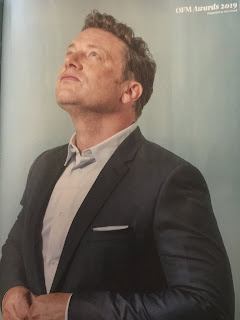I've been back at work from paternity leave for a week, and busy with marking and catching up on work bureaucracy, and my research group. The big news hanging over everything has been the general election. Ever since it was called several weeks ago I had supposed that it would not go well (for people of a progressive bent) since PM Johnson was leading the voices to call it and was doing so as he thought the timing was right to secure a Conservative victory, with the main opposition polling badly.
And so it turned out to be. The campaigns proved to be rather dark and depressing. In particular, things like the fake news being spread with absolutely no consequence, with the current Conservative Party (presumably led by the Machiavellian advisor Dominic Cummings) seemingly the worst offenders.
This comes along with frightening anti-foreigner rhetoric with Johnson bemoaning that EU citizens in the UK had been treating it like their own home. These are citizens who have come and made the country their home, and been welcomed.
This, too, comes after Johnson threw moderate MPs out of his party, illegally suspended parliament, and made a series of ridiculous sloganistic promises he couldn't possibly deliver (I will deliver Brexit, do or die!) in the last parliament.
The media have largely colluded with him, with attacks by the press on the judiciary, on parliament when it opposes the government. This has all led, in my view, to a very extreme Conservative party, which has little bearing to Conservative parties of the recent past. God knows I was not much of a fan of those, but today's version has burnt up the rule book of even the pretence of fair play, and stoked up mass hatred and a them-and-us situation. The word traitor is bandied about frequently. Hacked Twitter posts threw doubt on a story of a boy sleeping on a floor in a hospital and BBC journalists hungrily lapped up the fake news, with inconsequential apologies after the damage was done. Most reports begin "according to a government source" as the news media simply relays Cummings's proganda.
When Johnson first became PM, elected by the Conservative party then, not the general public, he announced without apparent irony that the mantra was to "Deliver Brexit, Unite the Country, and defeat Jeremy Corbyn". Clearly it is not possible to put as a top priority defeating the opposition while at the same time uniting the country, and he has been particualrly divisive. Those Conservative MPs that sought to moderate him were simply expelled. The Conservatives policies mean that the Brexit Party stood down candidates so as not to compete against them, and why not, when the Conservatives have absorbed much of what the Brexit party stand for.
So, today the results of the election are known and Boris Johnson remains our PM, and parliament reconvenes on Monday with a Conservative majority.
The Conservative manifesto has been pretty light with promises (except the repeated mantra to Get Brexit Done), though they have promised to double research spending. Of course, that is something that a research scientist might like the sound of, but so far I have only heard dismay amongst my colleagues about the election result, fearing that we all will pay a heavy price one way or another. Of course, some of my colleagues, though not many, are right-leaning. I don't know if they approve of the current form of the Conservative party or not... please comment below if so / not!
Johnson also specifically mentioned nuclear physicists when talking about who would be allowed to come into the country in future:
Johnson also specifically mentioned nuclear physicists when talking about who would be allowed to come into the country in future:
He told Sky News: "People who, you know, are first violinists,
nuclear physicists, prima ballerinas, whatever - they're going to come
in, startup kings and queens, they're going to come in, simply by virtue
of what they can contribute.
I don't suppose many nuclear physicists will want to come to Britain as entrepreneurs, but we'll see.
Well, that's my feelings today when everything appears darkest. It will appear lightest to many, since after all this is what the vote of the population gave us. Life will go on...






























